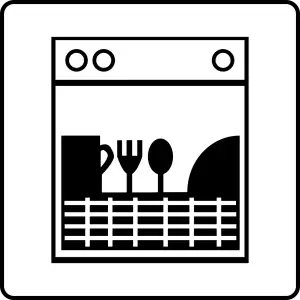Delicious Easter Bread Recipe: A Traditional Home-baked Masterpiece

- History and Significance of Easter Bread in Different Cultures
- Ingredients Required for Making Easter Bread
- Step-by-Step Instructions for Preparing the Perfect Easter Bread
- Tips and Tricks for Achieving a Fluffy and Flavorful Easter Bread
- Variations and Additions to Enhance the Taste of Easter Bread
- Serving Suggestions and Pairings for Easter Bread
- Storing and Preserving Easter Bread for Extended Enjoyment
Easter is a time of joy and celebration, and what better way to mark this special occasion than with a delicious homemade Easter bread? This traditional delicacy has been enjoyed by families for generations, and its rich history and significance make it an integral part of Easter festivities around the world. With its soft texture, sweet aroma, and beautiful decorations, Easter bread is not just a treat for the taste buds but also a feast for the eyes. Join us as we explore the art of making this delightful masterpiece and discover how it can add a touch of tradition and flavor to your Easter celebrations.
History and Significance of Easter Bread in Different Cultures
Easter bread holds a rich history and cultural significance in various parts of the world. In Greece, it is known as "Tsoureki" and is traditionally baked with red-dyed eggs to symbolize rebirth. In Italy, it is called "Pane di Pasqua" and often contains candied fruits and almonds, representing the sweetness of life. In Eastern European countries, such as Poland and Ukraine, it is known as "Babka" or "Paska" and is intricately braided to symbolize the Holy Trinity. Regardless of the name or variation, Easter bread serves as a symbol of unity, renewal, and joy during the Easter celebrations across different cultures.
Ingredients Required for Making Easter Bread
To make the perfect Easter bread, you will need the following ingredients:
1. Flour: Use all-purpose flour for a light and fluffy texture.
2. Yeast: Active dry yeast or instant yeast will help the dough rise.
3. Sugar: Adds sweetness to the bread.
4. Milk: Provides moisture and richness to the dough.
5. Butter: Adds flavor and helps create a tender crumb.
6. Eggs: Essential for binding and enriching the dough.
7. Salt: Balances the flavors in the bread.
8. Vanilla extract: Enhances the aroma of the bread.
9. Lemon zest: Adds a subtle citrusy flavor.
10. Raisins or dried fruits (optional): Traditional additions that add sweetness and texture.
Gathering these ingredients is the first step towards creating a delectable Easter bread that will be enjoyed by all!
Step-by-Step Instructions for Preparing the Perfect Easter Bread
1. In a large mixing bowl, combine warm milk, yeast, and sugar. Let it sit for 5 minutes until foamy.
2. Add melted butter, eggs, vanilla extract, and salt to the bowl. Mix well.
3. Gradually add flour to the mixture while stirring with a wooden spoon until a sticky dough forms.
4. Transfer the dough onto a floured surface and knead for about 10 minutes until smooth and elastic.
5. Place the dough in a greased bowl, cover with a clean kitchen towel, and let it rise in a warm place for 1-2 hours or until doubled in size.
6. Punch down the risen dough gently to release any air bubbles and divide it into equal portions.
7. Shape each portion into a rope-like strand and braid them together to form a loaf shape.
8. Transfer the braided loaf onto a baking sheet lined with parchment paper.
9. Cover the loaf with a kitchen towel and let it rise again for 30-45 minutes until puffy.
10. Preheat the oven to 350°F (175°C). Brush the risen loaf with beaten egg wash for a shiny finish.
11. Bake for 25-30 minutes or until golden brown on top and hollow-sounding when tapped on the bottom.
12. Remove from the oven and let it cool completely on a wire rack before serving.
Follow these simple steps to create your own homemade Easter bread masterpiece that will impress your family and friends!
Tips and Tricks for Achieving a Fluffy and Flavorful Easter Bread
To achieve a fluffy and flavorful Easter bread, there are a few tips and tricks that can make all the difference. Firstly, ensure that your yeast is fresh and active by proofing it in warm water with a pinch of sugar. This will help the dough rise properly. Secondly, knead the dough thoroughly to develop gluten, which gives the bread its structure. Use a stand mixer or knead by hand until the dough is smooth and elastic. Thirdly, allow the dough to rise in a warm place free from drafts. Cover it with a damp cloth or plastic wrap to create a humid environment for optimal rising. Lastly, brush the bread with an egg wash before baking to give it a beautiful golden color and shine. These tips will guarantee a light, airy, and delicious Easter bread that everyone will love!
Variations and Additions to Enhance the Taste of Easter Bread
To add a unique twist to your Easter bread, consider incorporating different flavors and ingredients. One popular variation is adding dried fruits such as raisins, currants, or chopped apricots to the dough. This adds a burst of sweetness and texture to each bite. Another option is to sprinkle the top of the bread with sesame seeds or slivered almonds before baking, giving it a delightful crunch. For those who enjoy a hint of spice, try adding a pinch of cinnamon or nutmeg to the dough for a warm and aromatic flavor. Additionally, you can experiment with different extracts like almond or orange to infuse your bread with a subtle yet enticing taste. Don't be afraid to get creative and personalize your Easter bread recipe – it's all about making it truly special for your loved ones!
Serving Suggestions and Pairings for Easter Bread
When it comes to serving Easter bread, there are numerous delicious options to consider. One classic way is to simply slice the bread and serve it on its own. The soft, slightly sweet flavor of the bread is perfect for enjoying with a cup of tea or coffee.
For a more decadent treat, try spreading some butter or cream cheese on a slice of Easter bread. The creamy texture of these spreads complements the bread's fluffy interior and adds an extra layer of richness.
If you're looking for a savory pairing, consider serving Easter bread alongside some cured meats and cheeses. The combination of the bread's sweetness with the salty flavors of prosciutto or salami creates a delightful contrast that will leave your taste buds wanting more.
Another option is to use Easter bread as the base for French toast. Dip slices of the bread in a mixture of beaten eggs, milk, and cinnamon, then fry them until golden brown. Top with powdered sugar and maple syrup for a truly indulgent breakfast or brunch dish.
Lastly, don't forget about dessert! Serve slices of Easter bread with a dollop of whipped cream and fresh berries for a light and refreshing treat. Or get creative and use it as the base for a bread pudding or trifle.
No matter how you choose to serve it, Easter bread is sure to be a hit at any gathering. Its versatility makes it suitable for any time of day, whether it's breakfast, brunch, afternoon tea, or dessert. So go ahead and embrace this traditional delight and delight your loved ones with its deliciousness!
Storing and Preserving Easter Bread for Extended Enjoyment
Storing and preserving Easter bread is essential to ensure its freshness and enjoy it for an extended period. Once the bread has cooled completely, wrap it tightly in plastic wrap or place it in an airtight container. Store it at room temperature for up to 3 days. For longer shelf life, refrigerate the bread for up to a week. To freeze Easter bread, wrap it tightly in plastic wrap and then place it in a freezer bag. It can be stored in the freezer for up to 3 months. When ready to enjoy, thaw the bread at room temperature or gently warm it in the oven for a few minutes. Proper storage will maintain the delicious taste and texture of your homemade Easter bread.
In conclusion, Easter bread is not just a delicious treat, but a symbol of tradition and love. By embracing the art of making this delightful bread, you can create a masterpiece that will delight your loved ones during Easter celebrations. Whether you follow the traditional recipe or add your own personal touch, the process of baking Easter bread is a labor of love that will bring joy to all who taste it. So this Easter, gather your ingredients, follow the steps, and let the aroma of freshly baked bread fill your home. Embrace this cherished tradition and watch as your loved ones savor every bite of this homemade masterpiece.
Published: 07. 12. 2023
Category: Home



